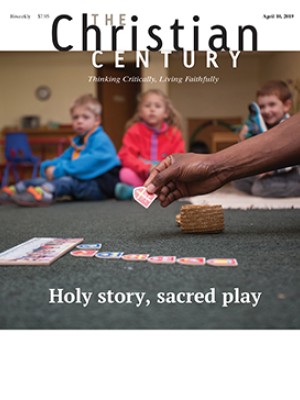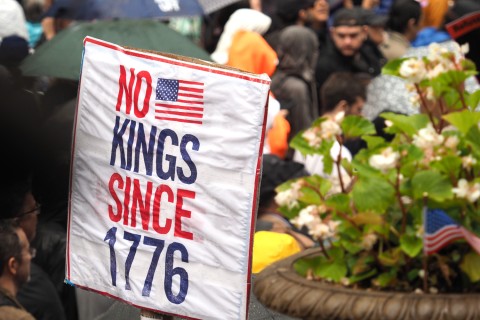April 28, Second Sunday of Easter (John 20:19–31)
Passing the peace is a word of welcome. It’s also much more than that.
How’s the transition going? After I shared with my church my plan to complete my pastoral ministry, this became the most common question that I was asked. Not, How are you? or, Are you preaching this Sunday? or, Can I come by to see you at the church? Just: How’s the transition going?
I never knew what to say. My last Sunday was still months away, and much of life and ministry continued as before. I still went to the church during the week. I still preached or led worship on Sunday mornings. I still led staff meetings, went to council and committee meetings, made hospital visits. I knew the transition was coming, but it hadn’t actually happened yet.
Read our latest issue or browse back issues.
Now, three months after my last Sunday, the transition has become real to me. I’ve started a new role as resident author at a congregation on the other side of town. When I go to my new church office during the week, I always pack a lunch since I can’t just zip up the hill to go home. My husband and I are still figuring out where to sit on Sunday mornings. I don’t know everyone’s name.
One of the many things I’m getting used to is the practice of passing the peace. My new church does this every Sunday. “The peace of our Lord Jesus Christ be with you all,” says the worship leader. “And also with you,” we respond. Then the invitation is given as printed in the worship booklet: “All are invited to bless one another with the peace of Christ.”
When everyone stands, I do too. Most people shake hands, but I see a few hugs around the room as well. I don’t cross the aisle or move around the worship space to offer a word of greeting, but some people do. “The peace of Christ be with you,” people say. “Shalom.” “The Lord be with you.” The exact wording seems to vary, but there is a consistent spirit of welcome and good will.
For this church and many others, passing the peace is as much a part of worship as the sermon or the closing song. But for me it’s a new practice to pass the peace week after week after week. In my previous church, the closest we ever got was to have a time of welcome during the service, when people were invited to greet those around them. But many people thought this greeting time was unnecessary, since they would say hello to people around them as soon as they arrived, anyway. One especially bad flu season we dropped that part of the service in favor of more singing, and we never picked it up again.
When Jesus appears to his disciples after his resurrection, he greets them with “Peace be with you. . . . Peace be with you!” We might think of this as a customary greeting of respect, as good manners in the biblical world. David instructs his men to greet Nabal with “‘Peace be to you, and peace be to your house, and peace be to all that you have” (1 Sam. 25:6). When Jesus sends his disciples out ahead of him, he tells them to say, “Peace to this house!” (Luke 10:5).
Yet with the life, death, and resurrection of Jesus, this customary greeting of peace takes on a new significance. In his words of farewell to his disciples, as Jesus tells them he will leave and then return, he promises, “Peace I leave with you; my peace I give to you” (John 14:27). Later he adds, “I have said this to you, so that in me you may have peace” (John 16:33). Now on his return, Jesus’ greeting of peace recalls those earlier promises—and the disciples’ grief over Jesus’ suffering and death becomes a joyful reunion in his new life. Now their fear over what might happen next is laid to rest. The peace he promised is theirs.
A week later, Jesus again appears to his disciples. Thomas was missing earlier, but now he too is present to receive Jesus’ greeting, “Peace be with you.” It’s a greeting that contains a lot: Peace be to those who doubt, Thomas. Peace be to those who have seen and believed, my disciples and friends. Peace be to those who have not seen yet have come to believe, my beloved church throughout the ages and today.
We passed the peace as usual this last Sunday. I didn’t find it quite as awkward as the first time, although I still remained standing where I was instead of moving around the room. “Peace to you, Peter,” who was sitting in front of me, although I had already greeted him at the door when we arrived. “Peace to you, Helene,” who said to me the week before, “I’m so glad you’re here!” “Peace to you,” to the person beside me, though I don’t yet know that person’s name.
Passing the peace is just one of the many new things I’m learning in this time of transition, and it’s already growing on me. It’s a word of welcome, yes, but it’s more than that. It’s the promise of the risen Christ to all of us. God’s peace can be ours week after week after week, and not only for ourselves but to pass on to others.
People have mostly stopped asking me, “How’s the transition going?” But I feel more in transition now than I did in those last months with my previous church. What’s more, I’ve finally figured out how to answer the question: I’m learning the peace of Christ.






